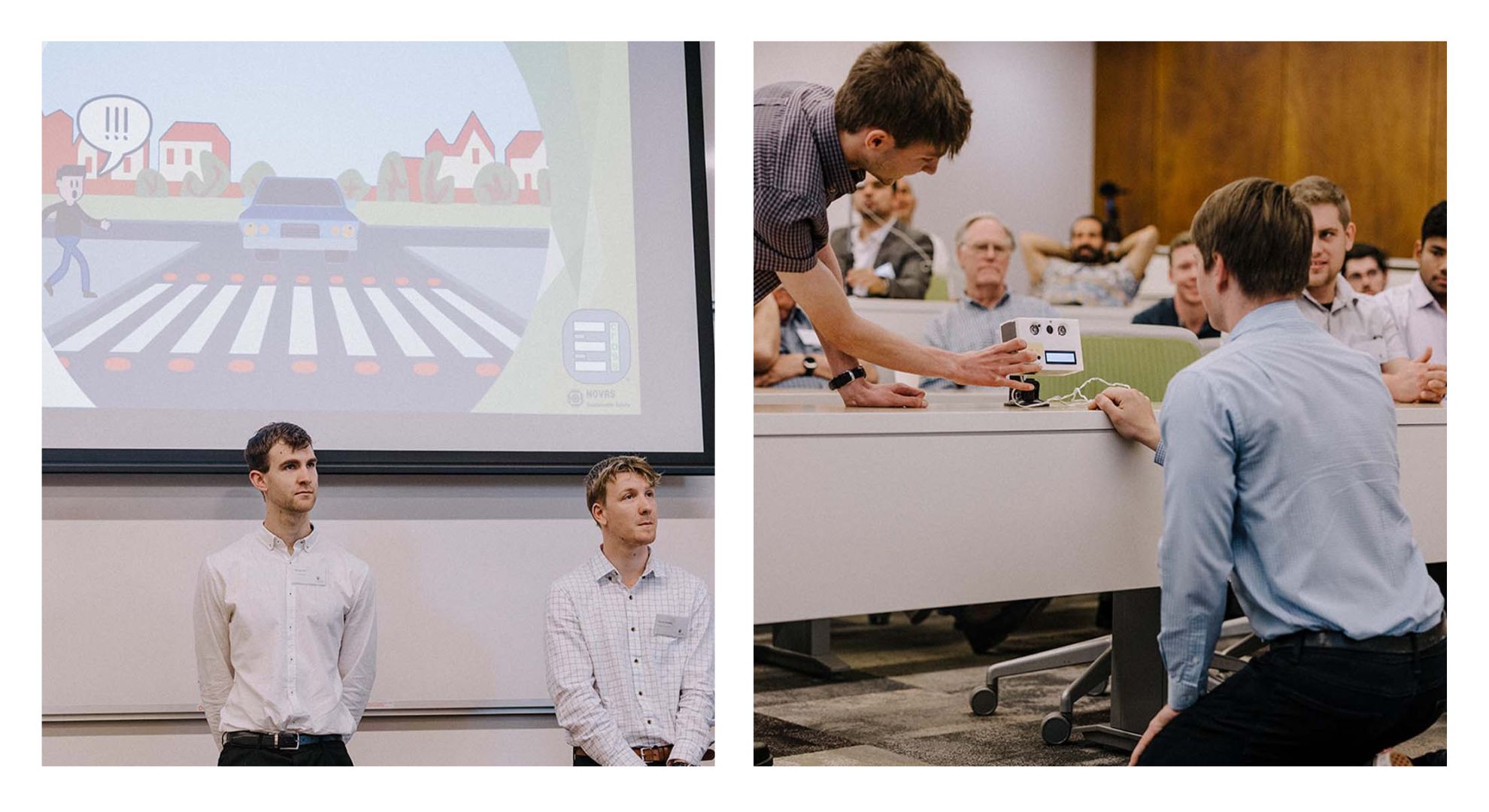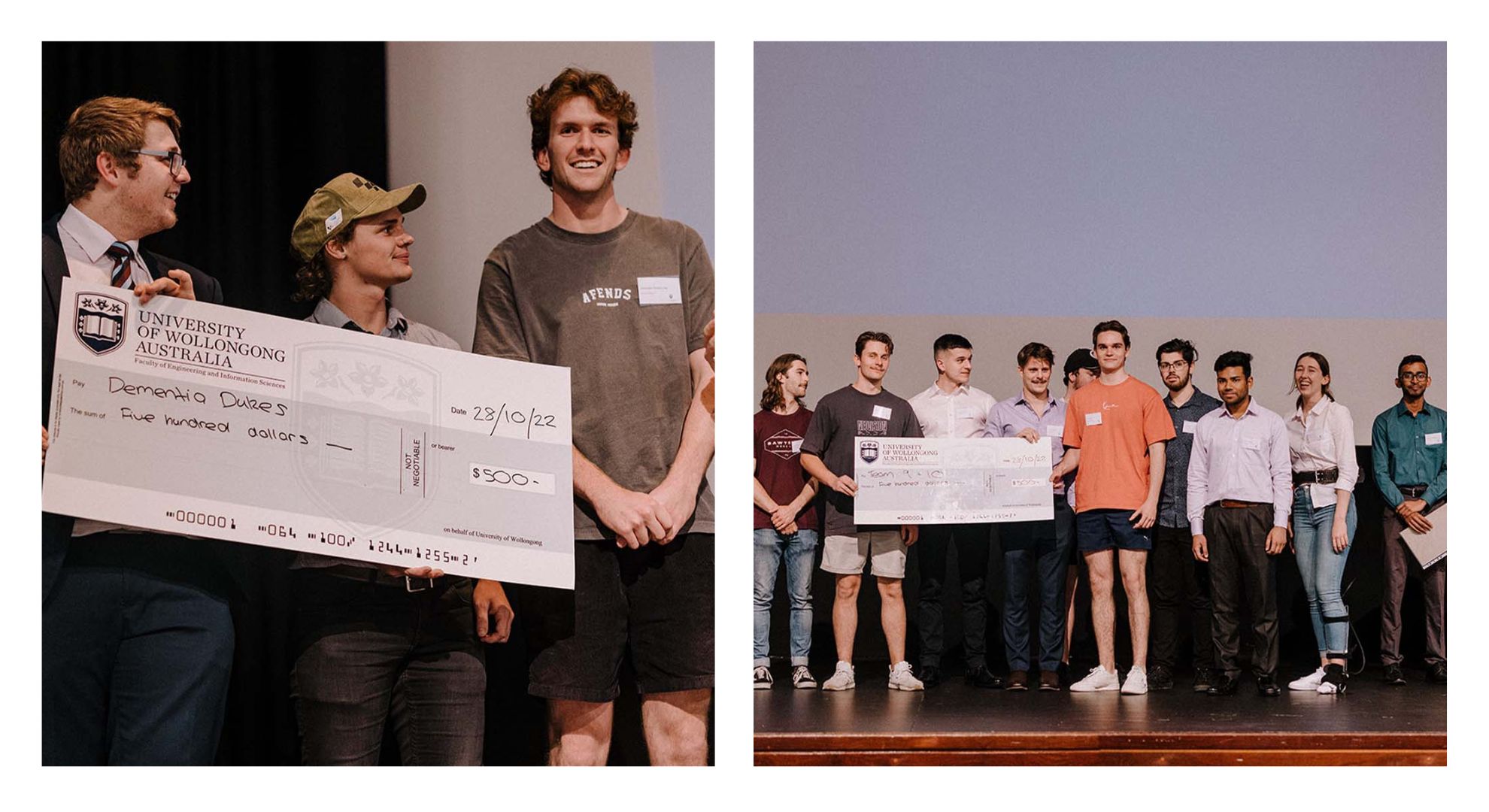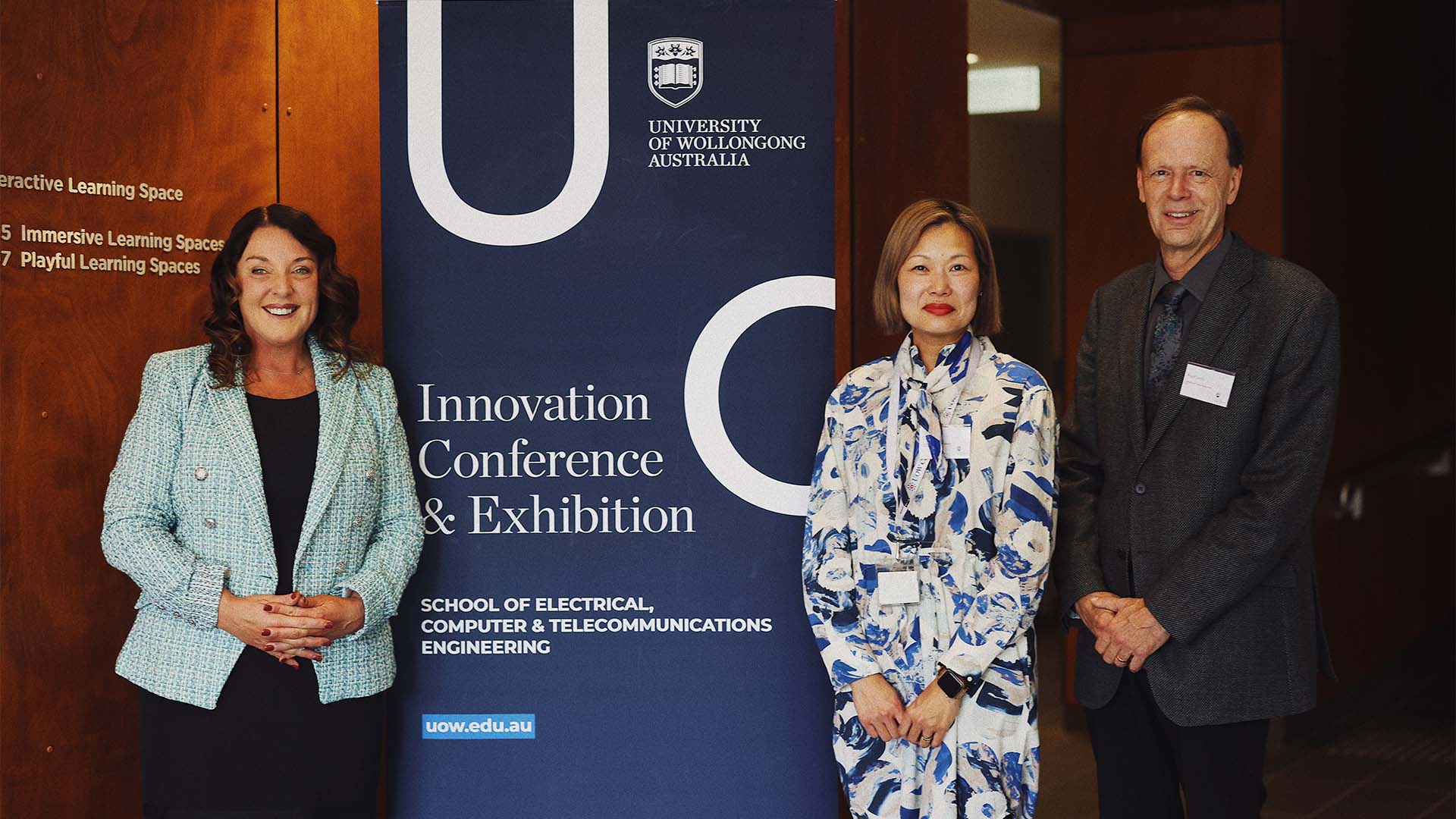October 28, 2022
Engineering students work on solutions for dementia care and transport safety
The annual SECTE Innovation Conference and Exhibition includes the display of innovative projects and industry-academia-student panel discussion
Using technology and the internet to improve the lives of our ageing population, particularly those living with dementia, is the theme of some of the student projects on display at today’s (Friday, 28 October) School of Electrical, Computer and Telecommunications Engineering (SECTE) Innovation Exhibition and Conference.
The event has opened with the Innovation Conference at the UOW Early Start, featuring talks from industry representatives, UOW start-ups and selected student project presentations. The opening speech was delivered by the University of Wollongong (UOW) Vice-Chancellor and President, Professor Patricia M. Davidson, followed by a talk by the Member for Cunningham, Ms Alison Byrnes MP and a panel discussion on “Skills shortage in STEM. Training the next generation STEM in the challenging job market.”

Then, everyone moved to the University Hall to attend the Innovation Exhibition. It’s an annual event, which provides an opportunity for students enrolled in the Engineering Design and Management subjects to showcase innovative products they develop as a team in their second and third year of studies.
This year, the themes for the second-year students’ projects have been solutions for dementia care, parking and transport safety. The third-year student teams have worked on developing interconnected systems for industries and communities that can change devices or improve environments from a remote distance.
To recreate a real-world project management setting, all students follow the same process, from formulating the initial idea to demonstrating the product to prospective clients. Along the way, they sharpen their skills that complement traditional engineering know-how, such as budgeting, marketing and environmental considerations.
Associate Professor Raad Raad, Head of School SECTE, said he was proud of the students for their hard work on these projects.
“During the year, students work in teams to conceptualise, design, fund and manufacture the products. Then, we showcase their solutions intending to integrate entrepreneurship and innovation into our University programs,” Associate Professor Raad said.

One of the projects presented during the SECTE Innovation Exhibition was the Rest-Ez system. This driver-assisting product detects signs of fatigue in a driver and alerts them to their lack of focus on the road. Its main objective is to help prevent fatigue-related incidents on Australian roads.
As one member of the team, third-year student John Davis said, the Rest-Ez system can recognise facial features using a pre-trained neural network and detect the number of blinks and yawns.
“The core software we have implemented is an algorithm that our team members developed to classify the level of fatigue the driver is experiencing. This algorithm is then used to alert the driver via an audible alarm and an LCD message,” John said.
SECTE student teams are usually multidisciplinary. The Rest-Ez team comprised two computer engineering students, two mechatronic engineering students and three electrical engineering students.
“This combined pool of knowledge really boosted the design, as we were all able to play into our talents and expertise,” John said.
